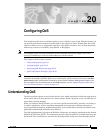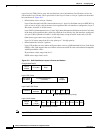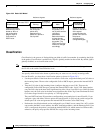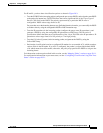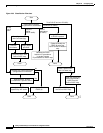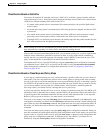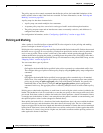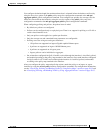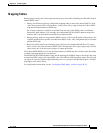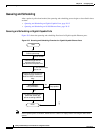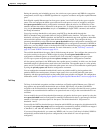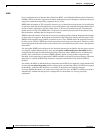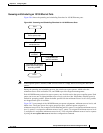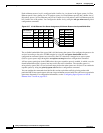
20-9
Catalyst 3550 Multilayer Switch Software Configuration Guide
78-11194-03
Chapter 20 Configuring QoS
Understanding QoS
You configure the bucket depth (the maximum burst that is tolerated before the bucket overflows) by
using the burst-byte option of the police policy-map class configuration command or the mls qos
aggregate-policer global configuration command. You configure how quickly (the average rate) the
tokens are removed from the bucket by using the rate-bps option of the police policy-map class
configuration command or the mls qos aggregate-policer global configuration command.
When configuring policing and policers, keep these items in mind:
• By default, no policers are configured.
• Policers can be configured only on a physical port. There is no support for policing at a VLAN or
switch virtual interface level.
• Only one policer can be applied to a packet per direction.
• Only the average rate and committed burst parameters are configurable.
• Policing can occur on ingress and egress interfaces:
–
128 policers are supported on ingress Gigabit-capable Ethernet ports.
–
8 policers are supported on ingress 10/100 Ethernet ports.
–
8 policers are supported on all egress ports.
–
Ingress policers can be individual or aggregate.
• On an interface configured for QoS, all traffic received through the interface is classified, policed,
and marked according to the policy map attached to the interface. On a trunk interface configured
for QoS, traffic in all VLANs received through the interface is classified, policed, and marked
according to the policy map attached to the interface.
After you configure the policy map and policing actions, attach the policy to an ingress or egress
interface by using the service-policy interface configuration command. For configuration information,
see the “Classifying, Policing, and Marking Traffic by Using Policy Maps” section on page 20-32 and
the “Classifying, Policing, and Marking Traffic by Using Aggregate Policers” section on page 20-37.



